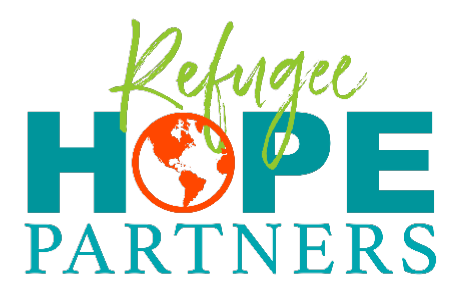The Refugee Crisis.
Want to learn more? Download our Refugee Crisis Pocket Guide.
WHAT IS A REFUGEE?
ref·u·gee | \ ˌre-fyu̇-ˈjē , ˈre-fyu̇-ˌjē\
: one that flees
especially : a person who flees to a foreign country or power to escape danger or persecution
Refugees are people who have fled war, violence, conflict, or persecution and have crossed an international border to find safety in another country. They are defined and protected by international law. A total of 149 countries have agreed to provide refugees with protections under the 1951 Refugee Convention. This is a key legal document that defines a refugee as “someone who is unable or unwilling to return to their country of origin owing to a well-founded fear of being persecuted for reasons of race, religion, nationality, membership of a particular social group, or political opinion.”
WHAT DO REFUGEES HAVE TO DO TO COME TO THE UNITED STATES?
The process of refugee resettlement is a complex and multi-step journey that aims to provide refugees with a new start in a safe country. The United States conducts a rigorous vetting process to determine whether to accept a refugee for resettlement. The entire process takes approximately two years (see the steps below).
IS THIS A WORLD-WIDE ISSUE?
Yes! There are over 117 million people who have been forcibly displaced worldwide. More than 1 in 69 people on earth have been forced to flee their homes, and 43.3% of the world’s displaced people are children. Around the world, one person becomes displaced every 2 seconds.
The Process Of Resettlement.
1. FLIGHT FROM DANGER
Escape: Refugees flee their home country due to war, persecution, or violence. This is often a dangerous and desperate journey, sometimes involving crossing borders illegally or risking their lives on treacherous routes to find safety.
Arrival in a Host Country: Refugees arrive in a neighboring country or a place where they can seek asylum. They may end up in refugee camps or urban areas, often under harsh and overcrowded conditions.
2. SEEKING ASYLUM
Registration: Refugees register with the United Nations High Commissioner for Refugees (UNHCR) or local authorities. This step is crucial for legal recognition and access to basic services.
Interviews and Assessments: Refugees undergo interviews to determine their status and needs. This can be a lengthy and invasive process, as they must prove their need for protection.
3. RESETTLEMENT APPLICATION
Referral: If returning home or integrating into the host country isn’t an option, the UNHCR may refer refugees for resettlement in a third country.
Selection by Resettlement Country: The chosen country reviews the case and may conduct additional interviews, background checks, and health screenings. This is a rigorous process that can take months or even years.
4. PRE-DEPARTURE PREPARATION
Cultural Orientation: Refugees receive training to help them understand the culture, laws, and expectations of the resettlement country.
Health Checks: Comprehensive medical exams ensure refugees are fit for travel and help identify any immediate healthcare needs.
Travel Arrangements: Logistics for travel are arranged, including flights and necessary travel documents. This phase is filled with anticipation and anxiety about the future.
5. ARRIVAL AND INTEGRATION
Reception: Upon arrival, refugees are greeted by resettlement agencies and volunteers who help them navigate their new environment.
Initial Support: Refugees receive immediate assistance, including temporary housing, basic necessities, and financial aid for the first few months.
Integration Programs: Long-term support includes language classes, employment services, education for children, and counseling to help refugees adapt and become self-sufficient.
6. LONG-TERM CHALLENGES
Cultural Adjustment: Adapting to a new culture can be challenging and isolating. Language barriers, different social norms, and discrimination may pose significant hurdles.
Economic Stability: Finding stable employment can be difficult due to language skills, recognition of qualifications, and job market competition.
Community and Belonging: Building a new life includes forming connections within the community and finding a sense of belonging, which can take time and effort.
STARK REALITIES
Uncertainty and Waiting: The resettlement process is often slow, leaving refugees in limbo for extended periods.
Emotional Toll: The journey involves significant trauma, loss, and stress, affecting mental health and well-being.
Limited Opportunities: Only a small fraction of refugees (less than 1%) are ever resettled; most remain in camps or host countries under precarious conditions.
Refugee resettlement is a lifeline for many, offering hope and a chance for a new beginning. However, it is a complex and difficult process, filled with uncertainty and challenges that require immense resilience and support from the international community.
5 Things To Know About Refugee Resettlement.
NUMBER ONE
Refugees do not apply for resettlement themselves. UNHCR identifies vulnerable cases to be considered for resettlement.
NUMBER TWO
Only the most vulnerable refugees are considered for resettlement.
NUMBER THREE
Countries decide which refugees to admit for resettlement.
NUMBER FOUR
Persons who have committed serious crimes or who might pose a security threat are not eligible for refugee status or resettlement.
NUMBER FIVE
Only 1 in 309 refugees are ever resettled into another country.
The Process For U.S. Resettlement.
1. REFUGEE STATUS
UNHCR identifies refugees who will need resettlement based on their vulnerabilities and specific needs.
2. REFERRAL TO THE U.S.
UNHCR assesses each individual case, gathers all the background information and submits the case to be considered for resettlement.
3. SECURITY CLEARANCE
Resettlement Support Centers (RSCs) and U.S. government intelligence agencies run background checks and security clearance processes.
4. IN-PERSON INTERVIEWS
The Department of Homeland security conducts face-to-face interviews to determine whether the application qualifies for resettlement.
5. MEDICAL SCREENINGS
Pre-approved applicants go through a medical screening to ensure they do not have tuberculosis or communicable diseases.
6. MATCHING WITH A SPONSOR AGENCY
Approved applicants are assigned to local NGO’s that assist them upon arrival. These NGO’s help refugees integrate and become economically self-sufficient in their new U.S. community.
Refugee resettlement is a lifeline for many, offering hope and a chance for a new beginning. However, it is a complex and difficult process, filled with uncertainty and challenges that require immense resilience and support from the international community.
